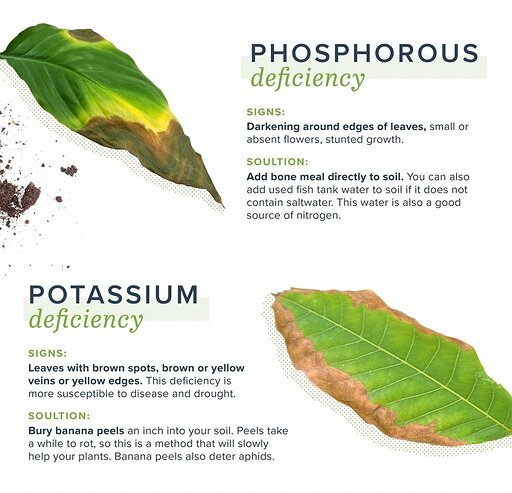Fixes for Nutrient Deficient Soil
A basic understanding of plant health comes from the soil they grow in. Their nutrition is vital to their health and overall sustainability, so it’s essential for plants to get all of the macronutrients necessary to thrive.
However, there are times we still struggle with a plant mysteriously dying off long before its time. It happens, but this is often indicative of a bigger problem with the nutrients in the soil. If one plant is struggling, others nearby may be too.
One method that has worked for me is specifying what nutrients appear to be lacking and why. It’s obvious that plants need nitrogen, phosphorus, and potassium (commonly known as NPK), but plant health is complex and nutrient deficiencies can stem from many places.
1. Nitrogen
Pale yellow, stunted leaves are a sure sign of nitrogen deficiency. Nitrogen is essential in photosynthesis, cell health, and chlorophyll development. Nitrogen depletion in soil happens when large amounts of carbon are added to the soil, typically after nearby plants decay and die. Microorganisms will use available nitrogen to break down the new carbon source and quickly deplete the nitrogen available to the plant. This stunts the plant’s growth.
To correct a nitrogen deficiency, consider planting nitrogen-rich plants like beans and peas nearby. Adding used and rinsed coffee grounds to the soil to promote nitrogen production. Rinsing the grounds will not affect the acid levels of the soil. A plant with plenty of nitrogen available to it will appear leafy green.
2. Phosphorus
Phosphorous ensures healthy cell division, fruiting, and root growth. Similar to nitrogen deficiencies, plants with a lack of phosphorus will struggle to grow. The edges of their leaves may darken to a brown or reddish-purple. Flowers or fruits will not grow. Some contributors to phosphorus-deficient soil include cold temperatures, heavy rainfall, and acidic soil.
To raise soil pH back to a more basic level, add bone meal directly to the soil. In time, the overall growth and color of the plant should return back to normal.
3. Potassium
Potassium is key in a plant’s ability to fight disease and begin fruiting. A plant lacking in potassium will show signs it in its leaves. Potassium-deficient plants will have brown or yellow edges along their leaves.
An effective method to raise potassium levels is burying banana peels an inch below the soil’s surface. It makes sense since bananas are also a rich source of potassium for us!
4. Magnesium
A plant lacking magnesium may look similar to a potassium deficiency. The key difference is that a magnesium-deficient plant will almost always yellow around the edges of its leaves, not brown. Magnesium is a necessary element in chlorophyll, and therefore light absorption for photosynthesis.
To correct this deficiency, sprinkle Epsom salt on top of the soil before watering. Its compound of magnesium and sulfate will replenish the soil.
5. Calcium
A calcium deficiency will be evident in weak leaves that have yellow spots. Sometimes they will even begin to rot. This happens because calcium supports a plant’s structural cell walls, so a plant will gradually weaken without it.
Crushed eggshells are primarily composed of calcium carbonate and can bring calcium back to the soil when buried well into the area around the calcium-deficient plant.
This infographic succinctly details the signs for each deficiency and the natural solutions for each.
Of course, other ways to improve soil quality are by growing a diverse number of plants and introducing organic matter and compost. The priority is to always work with nature, aiding when needed, rather than controlling and stopping its natural processes.
Another way to do keep your plant well-nourished is to feed homemade plant food. Homemade plant food is much cheaper than commercial fertilizers and does not contain any added chemicals or fillers store-bought plant food might contain.
Fill an old plastic milk jug with these ingredients and let it sit for about half an hour to let the solid ingredients dissolve. Lightly top your plant’s soil once a month with this solution and adjust your frequency based on how your plants react. Be sure to label the jug and store it where children and pets cannot reach it.
Of course, other ways to improve soil quality are by growing a diverse number of plants and introducing organic matter and compost. The priority is to always work with nature, aiding when needed, rather than controlling and stopping its natural processes.
